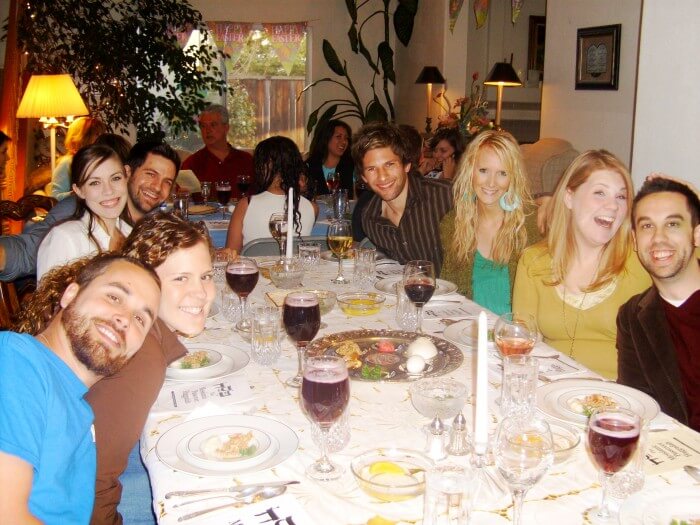
Hosting a Passover Seder is one of the biggest highlights for my family each year. We LOVE it. And we wish we had more room so we could invite many more people, because there are dozens who look forward to it with us each year as much as we do. We just can’t fit everyone!
So, my suggestion? Host one! You DON’T have to be an expert!
There are a bunch of things you need to acquire from the start, but you can reuse them every year, and soon it will become so easy! So I’m going to do this post kind of like a recipe: the items you need, and then the preparation instructions.
Items you will need:
- 1 Haggadah for each person. We’ve been using the same ones for over a decade and we really like it. You can find it here.
- 1 Seder Plate per table. We have a couple of different kinds, and you can find them in spades online. Here‘s a pretty one for a very decent price.
- Per Seder Plate, you will need: a sprig of parsley, a leaf of lettuce, a roasted/hard boiled egg, a shank bone or chicken wing or neck, horseradish, and charoset (you can find my recipe here).
- At least once piece of matzah bread per person. We like Manisschewitz.
- 1 candle per table and a lighter or matches.
- 1-2 plates per setting, flatware, napkins, wine glass and water glass per setting. (We do 2 plates – one small plate for the ceremonial foods, and one larger plate for the festival meal, plus a bowl for the matzah ball soup!)
- Wine or sparkling grape juice. Enough for each person to have two glasses or more.
- A bowl of salt water per person and a bowl of regular water per person. (We actually do one every other person at the table for space purposes.)
- 1 Matzah Tosh (or Tash) bag. You can find a pretty nice one here or I would imagine it would be fairly simple to make.
- 1 afikoman cover. This website has some nice ones to choose from for good prices. Although this would also seem easy to make.
- Goblet for Elijah.
- Matzah ball soup. This isn’t technically required, but it’s still a tradition. We usually buy a box mix at the grocery store and it’s delicious!
- Festival meal. You can provide this yourself, or you can do it like a potluck. We usually go the potluck route and save ourselves a bit of time and money.
Instructions/Preparations:
First thing’s first. The Passover Seder marks the beginning of the Jewish holiday Passover which is basically the week before Easter. You can check online each year for exact dates. We usually just choose a day during Passover to observe the Seder. Since they typically take place on week nights, we usually start ours around 6:30 p.m. to allow time for people to get off work and come. Decide how many people you can make room for and get your invitations out early! We try to invite people a month in advance. Since we do it potluck style, when we receive RSVP’s, we ask our guests to bring a specific part of the meal: side, dessert, salad, bread, wine, etc.
To start, there are three parts to the Passover Seder which are broken down for you in the Haggadah. Times will vary, but ours typically goes like this: time before the meal – 40 minutes; festival meal – 45 minutes; time after the meal – 30 minutes. So you’re looking at 2-3 hours total.
The person leading the Seder is usually the head of the household. He should get acquainted with the Haggadah before going through it with guests. To be clear, the Haggadah contains the complete order of service. Order the booklet, read it, and I bet most of your questions will be answered. 😉 I would suggest making notes in it, including phonetic translations if some words are hard, scriptures he may want to read, or additional information or observations he may want to include.
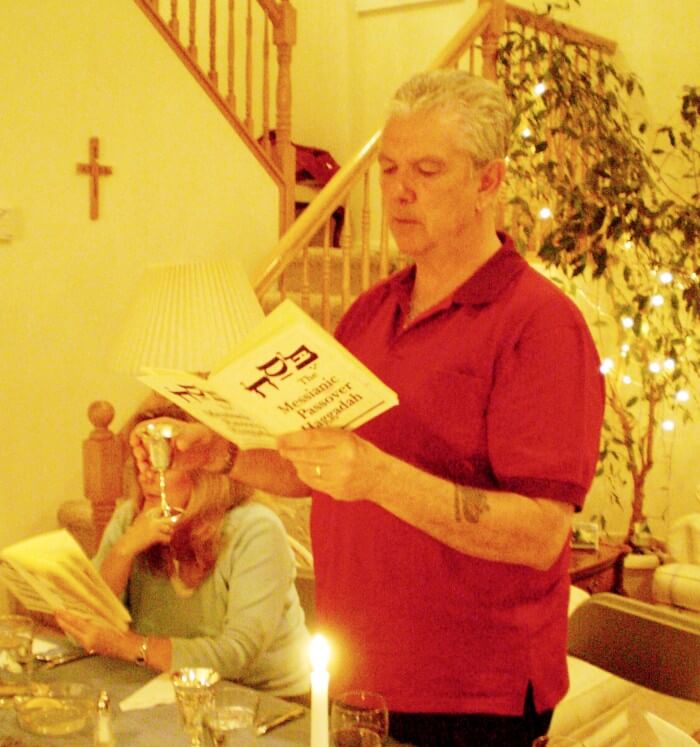
You’ll notice that there are several other readers called for in the Haggadah in different parts. The hyper-planner in me always wants to have these people chosen and confirmed ahead of time, but we’ve found it to be simpler if we just ask certain guests as they arrive (of course giving them permission to say no if they don’t want to do it).
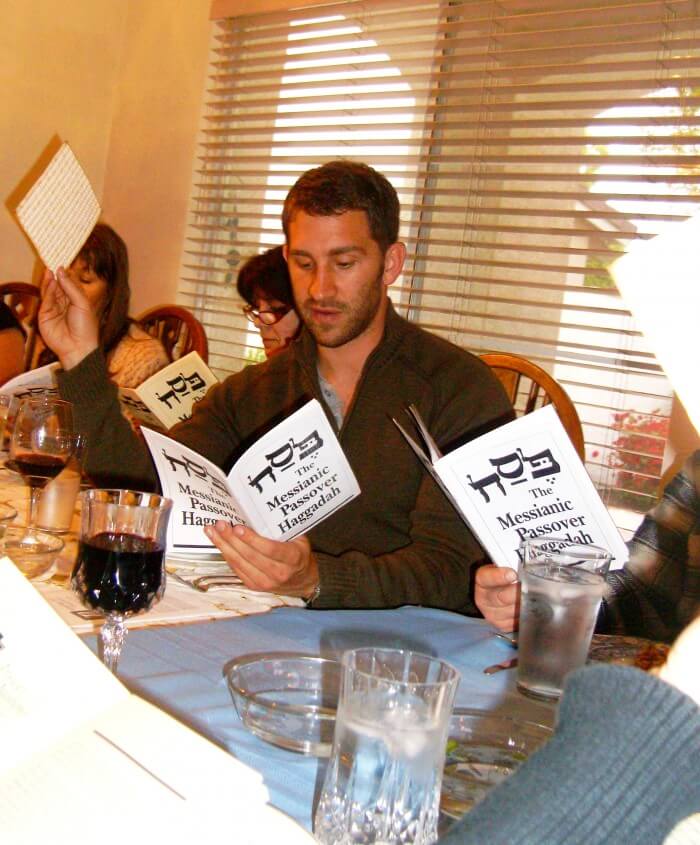
You’ll also notice there are a few songs in Hebrew in the Haggadah. You can find audio files of some of these songs at this website if you’d like to incorporate a little music into your celebration. We have yet to do this . . . maybe this year we’ll give it a try!
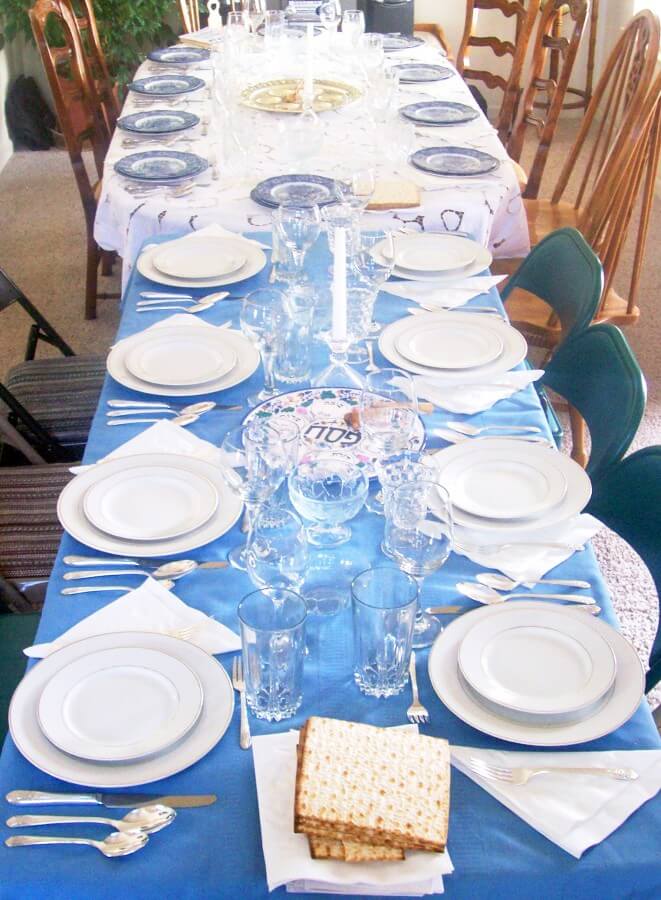
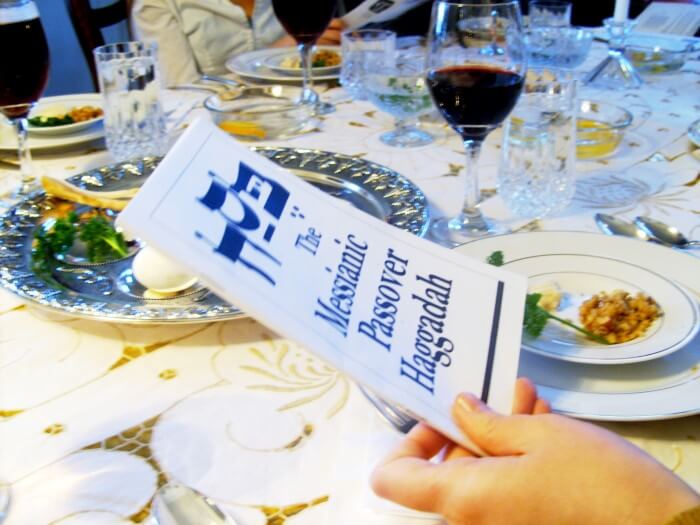
Setting your table, once you have all the elements, is a cinch! At each table you will have a place setting, water glass, and wine glass for each person. (For guidelines on how to set the proper place setting, my favorite is by the queen of etiquette, Emily Post.) Bottles of wine or karafes should be kept either at the table or close by. There should be a bowl of regular water for “hand washing” (more like finger-dipping) and a bowl of salt water to dip the karpas into. You could provide one that gets passed around, one per person, or some variation. We do the two bowls every two or three people. We also differentiate the salt water from the regular water by putting a sprig of parsley in the salt water, since ours are in identical bowls. Matzah bread/crackers should be available to each person as well. We normally have a plate of matzah at each end of the table for people to pass around. Elijah’s goblet/glass should be placed at one of your tables as well. Each table gets one candle (which the lady of the house will light as the Haggadah directs), and one Seder plate.
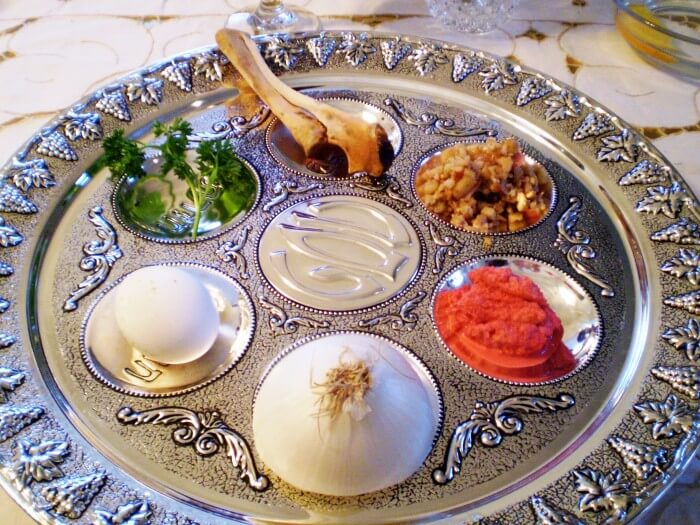
Above, you see the Seder plate. I’m not sure why our bitter herb that year was pink, but apparently that was our horseradish. It also appears we chose an onion rather than a leaf of lettuce. Obviously we like to get creative sometimes. This plate can be prepared in advance to keep the last minute details at a minimum. The parts that are actually eaten are the karpas (parsley), the maror (the bitter herb/horseradish), and the charoset (apple and nut mixture), which we usually go ahead and put a little of each on the individual plates just before guests arrive so they don’t have to dish from the Seder plate.
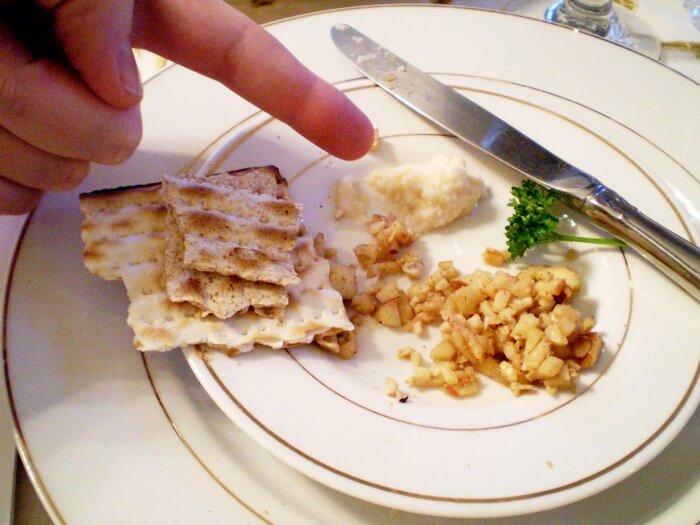
Also, make sure you get your matzah tosh cloth ready to go and place it at the leader’s place setting for easy access. The cloth to hide the afikoman in should also be kept readily handy.
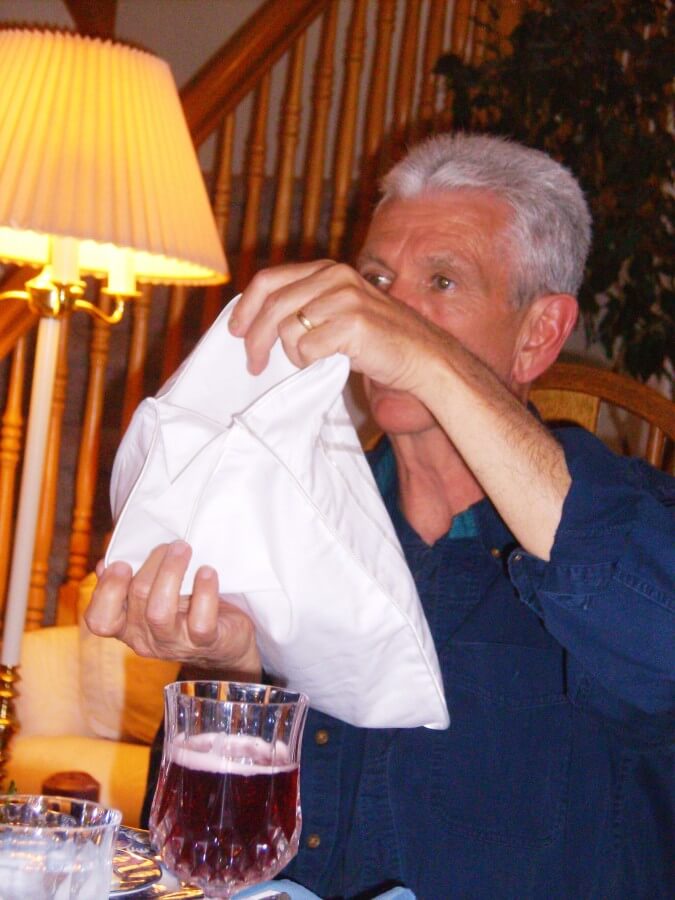
Since it’s dinner time when people arrive but they’re looking at another hour before the festival meal, we usually start with a nice hot bowl of matzah ball soup. It’s always a hit and does quite well at holding people’s growling stomachs at bay. Sometimes we’ll actually assemble the matzah balls the day before and keep them refrigerated to cook the day of the Seder. But of course you can time it to your convenience.
Have your meal ready and waiting, keeping in mind for baking and temperatures that it will be about an hour after guests arrive before it will actually be eaten. Sometimes one of us will excuse ourselves during the ceremony to put something in the oven, but if you’re not a veteran, don’t let the food distract you! As I mentioned before, we do ours potluck style. We set it up like a buffet in a separate dining room and have people bring their plates in and help themselves during the festival meal time.
Now your celebration begins! Light the candles and follow the Haggadah! Take time to discuss and ask questions if you like. Enjoy the meal in the middle, and soak it all in. There’s so much depth to each part of the ceremony. Some of it may seem funny (we laught a LOT at our Seders), some of it may be very moving. I encourage you to embrace it all!
There are lots of resources online in case you have more questions. I barely scratched the surface of explaining all the symbolism in my last article, so you may find further research on those things useful, although the Haggadah does quite a good job at explaining a lot.
If you’re convinced you need to incoporate this tradition into your Easter holiday but don’t feel ready to host one, I would encourage you to find one locally to attend. It’s usually easy to find a church that is doing one and would welcome you gladly. For my Sacramento area folks, Harvest Community Church in Roseville does a Seder annually that has a great reputation.
Lastly, please use the comment section to ask questions I didn’t answer in this article! I’m so happy to help!
With that, enjoy your Passover Seder! Next year in Jerusalem!

Pingback: What Is a Passover Seder, Anyway? - On The WillowsOn The Willows